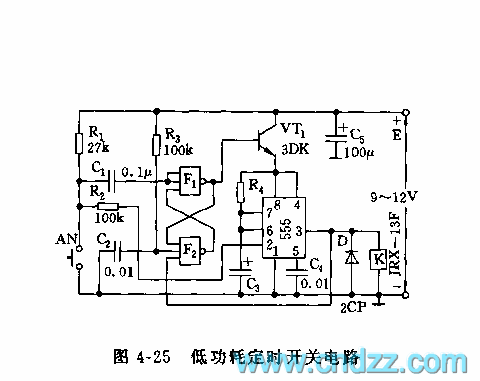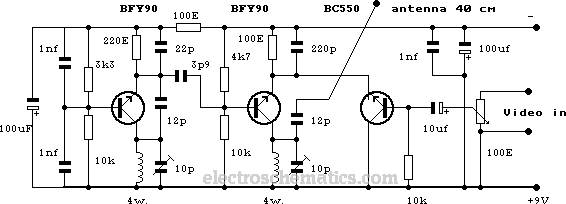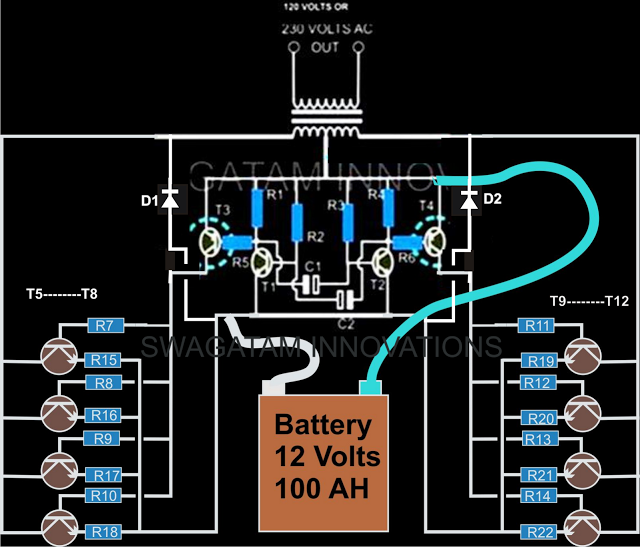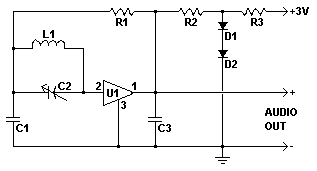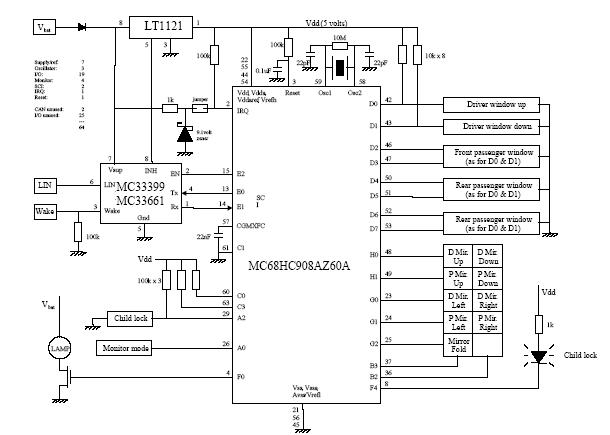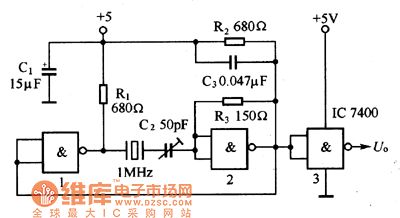
Using DTMF encoding and decoding wireless calling implement circuit diagram
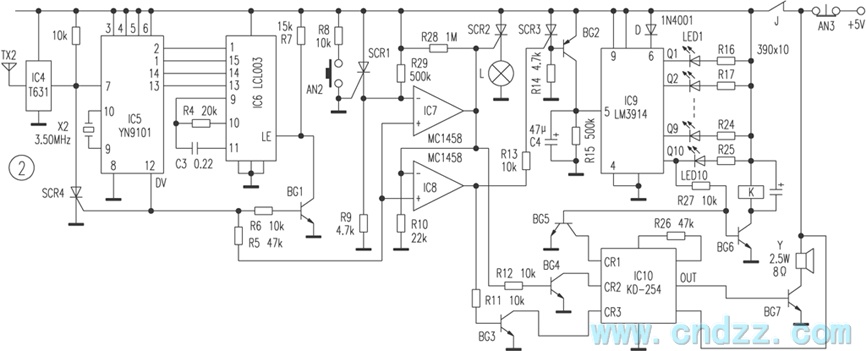
The wireless calling device consists of a calling unit and a host. These two components communicate using a DTMF encoder pulse. Each calling unit is assigned a unique code, although the circuits are identical. The calling unit is depicted in Figure 1. IC2 is the specific integrated circuit used for DTMF encoding, which can also generate a telephone dial tone.
The wireless calling device operates by utilizing a dual-component architecture: the calling unit and the host. The calling unit is equipped with a DTMF (Dual-Tone Multi-Frequency) encoder, which is a critical component for generating the signaling tones necessary for communication. The DTMF encoder translates the input signals from the calling unit into specific frequency pairs that represent different digits or commands.
Each calling unit is designed with a unique code, allowing multiple units to operate within the same system without interference. This feature is essential for environments where multiple users may need to communicate with a single host unit simultaneously. Despite the unique codes, the underlying circuit design remains consistent across all calling units, promoting ease of manufacturing and maintenance.
The host unit receives the DTMF signals transmitted from the calling units. It is responsible for decoding these signals and executing the corresponding commands. The communication between the calling unit and the host is facilitated through a wireless protocol, ensuring flexibility and mobility for the user.
The use of a specific integrated circuit (IC2) for DTMF encoding ensures reliable performance and compatibility with standard telephone systems. This IC is capable of generating the necessary tones for both calling and signaling, enhancing the overall functionality of the device. The schematic of the calling unit, as referenced, illustrates the arrangement of components, including power supply connections, the DTMF encoder, and any additional circuitry required for signal transmission.
In summary, the wireless calling device's design emphasizes modularity, reliability, and user-friendliness, making it suitable for various applications where wireless communication is required. The integration of DTMF technology allows for efficient and effective signaling, contributing to the device's overall performance and utility.The wireless calling implement is composed of calling implement and the host. The two parts use DTMF encoder pulse to realise communication. Different calling implement has different codes only, the circuits are all the same. The calling implement is shown in figure 1. IC2 is the DTMF encoding specific integrated circuit (telephone dial tone can also be.. 🔗 External reference
The wireless calling device operates by utilizing a dual-component architecture: the calling unit and the host. The calling unit is equipped with a DTMF (Dual-Tone Multi-Frequency) encoder, which is a critical component for generating the signaling tones necessary for communication. The DTMF encoder translates the input signals from the calling unit into specific frequency pairs that represent different digits or commands.
Each calling unit is designed with a unique code, allowing multiple units to operate within the same system without interference. This feature is essential for environments where multiple users may need to communicate with a single host unit simultaneously. Despite the unique codes, the underlying circuit design remains consistent across all calling units, promoting ease of manufacturing and maintenance.
The host unit receives the DTMF signals transmitted from the calling units. It is responsible for decoding these signals and executing the corresponding commands. The communication between the calling unit and the host is facilitated through a wireless protocol, ensuring flexibility and mobility for the user.
The use of a specific integrated circuit (IC2) for DTMF encoding ensures reliable performance and compatibility with standard telephone systems. This IC is capable of generating the necessary tones for both calling and signaling, enhancing the overall functionality of the device. The schematic of the calling unit, as referenced, illustrates the arrangement of components, including power supply connections, the DTMF encoder, and any additional circuitry required for signal transmission.
In summary, the wireless calling device's design emphasizes modularity, reliability, and user-friendliness, making it suitable for various applications where wireless communication is required. The integration of DTMF technology allows for efficient and effective signaling, contributing to the device's overall performance and utility.The wireless calling implement is composed of calling implement and the host. The two parts use DTMF encoder pulse to realise communication. Different calling implement has different codes only, the circuits are all the same. The calling implement is shown in figure 1. IC2 is the DTMF encoding specific integrated circuit (telephone dial tone can also be.. 🔗 External reference
